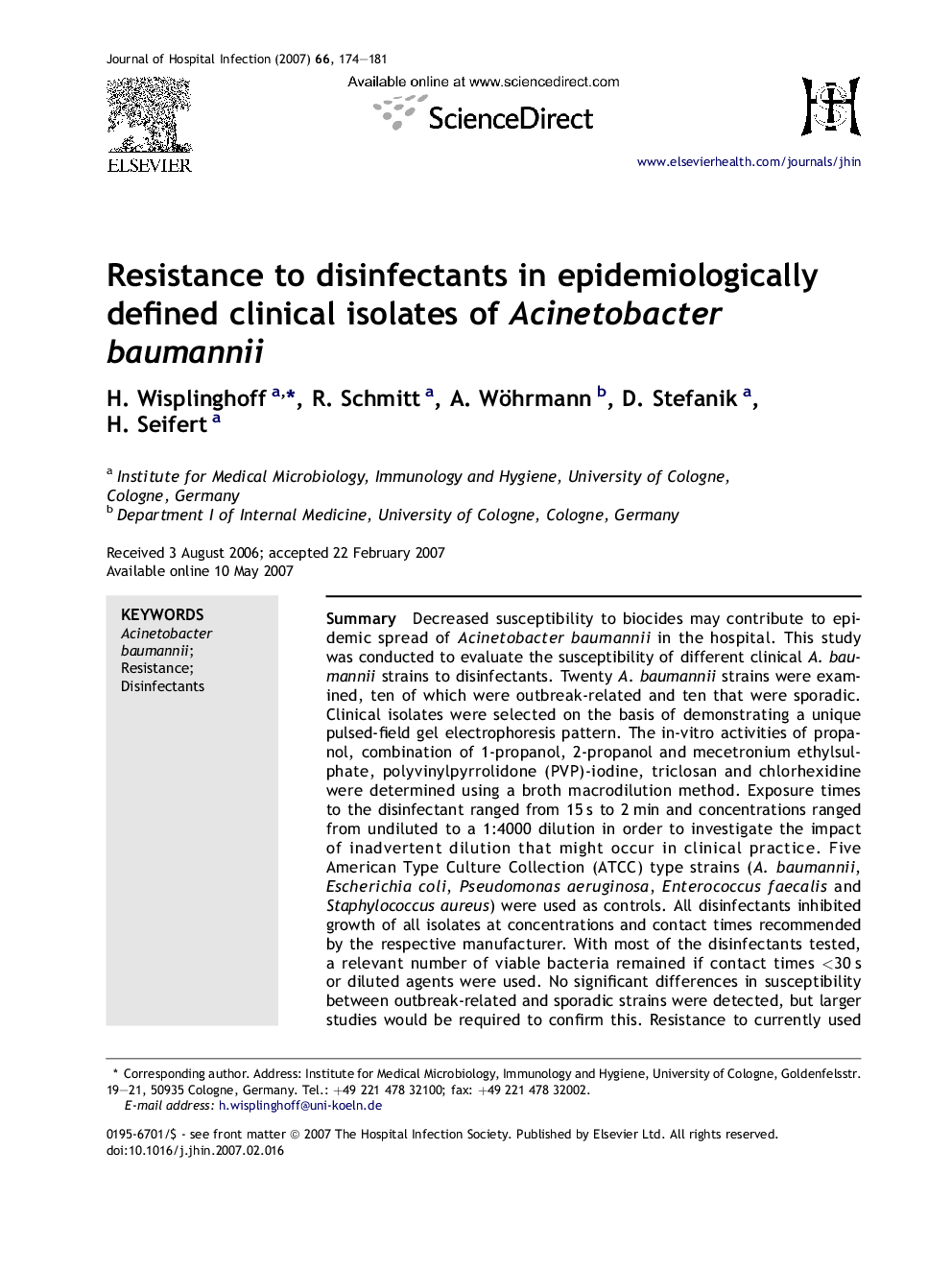| Article ID | Journal | Published Year | Pages | File Type |
|---|---|---|---|---|
| 3373634 | Journal of Hospital Infection | 2007 | 8 Pages |
SummaryDecreased susceptibility to biocides may contribute to epidemic spread of Acinetobacter baumannii in the hospital. This study was conducted to evaluate the susceptibility of different clinical A. baumannii strains to disinfectants. Twenty A. baumannii strains were examined, ten of which were outbreak-related and ten that were sporadic. Clinical isolates were selected on the basis of demonstrating a unique pulsed-field gel electrophoresis pattern. The in-vitro activities of propanol, combination of 1-propanol, 2-propanol and mecetronium ethylsulphate, polyvinylpyrrolidone (PVP)-iodine, triclosan and chlorhexidine were determined using a broth macrodilution method. Exposure times to the disinfectant ranged from 15 s to 2 min and concentrations ranged from undiluted to a 1:4000 dilution in order to investigate the impact of inadvertent dilution that might occur in clinical practice. Five American Type Culture Collection (ATCC) type strains (A. baumannii, Escherichia coli, Pseudomonas aeruginosa, Enterococcus faecalis and Staphylococcus aureus) were used as controls. All disinfectants inhibited growth of all isolates at concentrations and contact times recommended by the respective manufacturer. With most of the disinfectants tested, a relevant number of viable bacteria remained if contact times <30 s or diluted agents were used. No significant differences in susceptibility between outbreak-related and sporadic strains were detected, but larger studies would be required to confirm this. Resistance to currently used disinfectants is probably not a major factor in the epidemic spread of A. baumannii. However, even minor deviations from the recommended procedures leading to decreased concentrations or exposure times may play a role in nosocomial cross-transmission.
